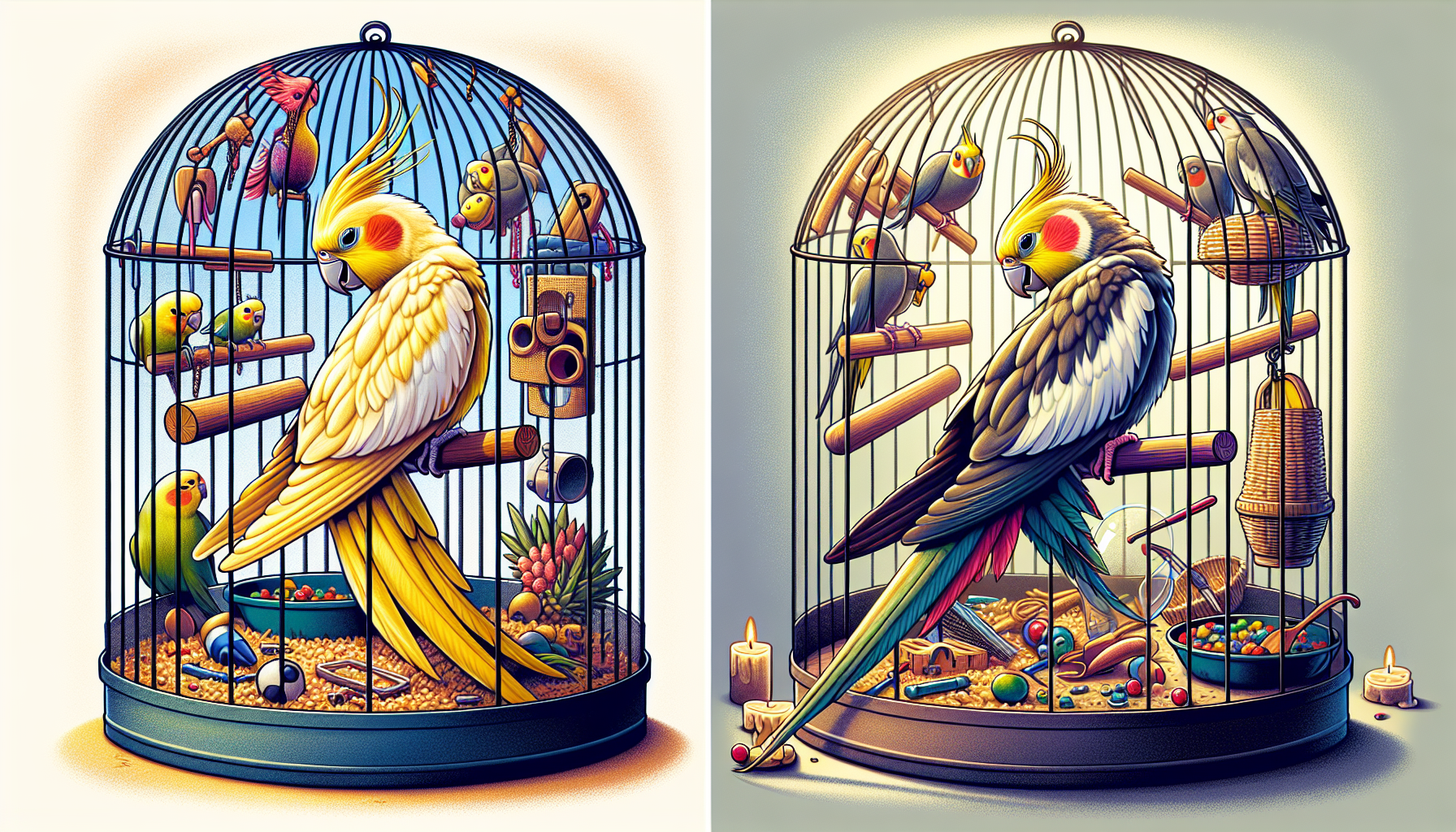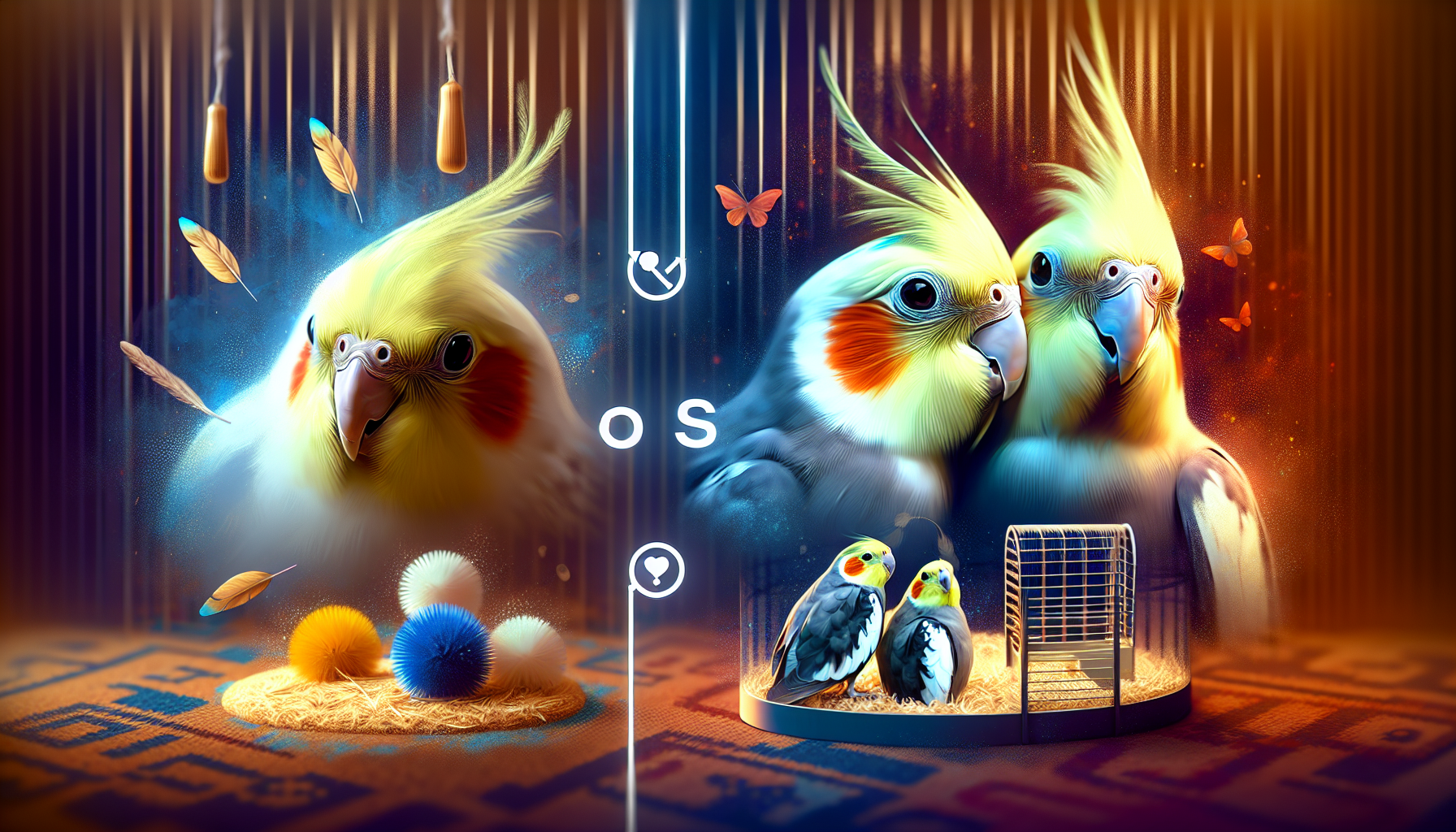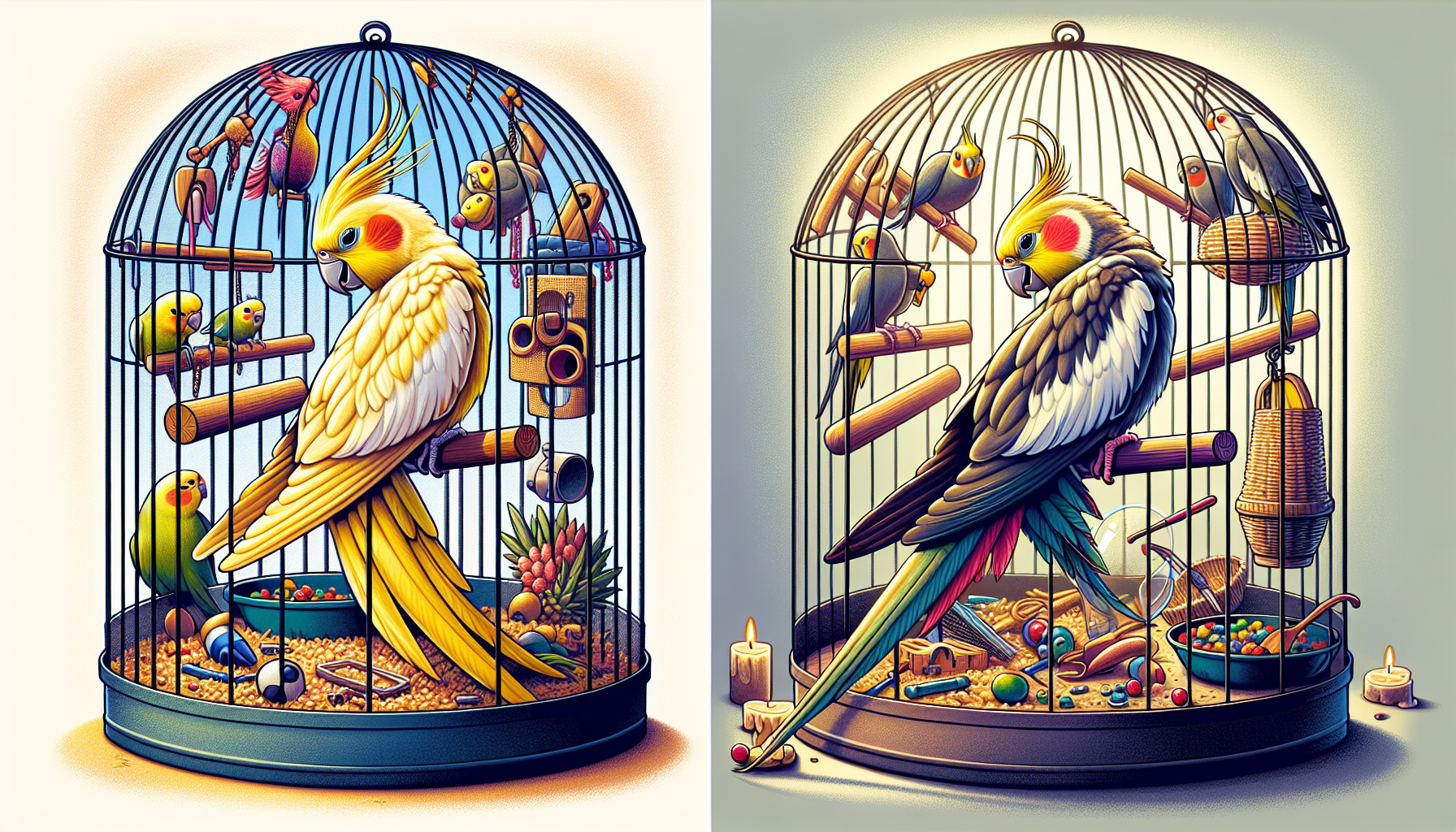So you’ve been considering getting a pet cockatiel, but you’re unsure whether it’s necessary or even beneficial for them to have a mate. Well, in this article, we’ll explore the intriguing question of whether a pet cockatiel should have a mate. We’ll examine the potential advantages and drawbacks of keeping these social birds as solo pets, helping you make an informed decision about the happiness and well-being of your feathery friend.

Benefits of Having a Mate
Companionship
Having a mate for your pet cockatiel can provide them with a valuable source of companionship. As social creatures, cockatiels thrive in the company of other birds and having a mate can ensure they always have someone to interact with. Having a feathered companion to share their days with can have a positive impact on their overall well-being and happiness.
Reduced Loneliness
Loneliness can be a real concern for pet cockatiels, especially if they spend long hours alone when their human companions are away. Having a mate can help alleviate this loneliness and provide constant companionship for your bird. They can engage in preening, playing, and even chatting with their mate, helping to keep them mentally and emotionally stimulated throughout the day.
Stimulation and Mental Health
Interacting with a mate can provide a significant amount of mental and emotional stimulation for your pet cockatiel. They can engage in activities such as playing, exploring, and problem-solving together, which can help keep their minds sharp and active. Additionally, having a mate can help prevent boredom, which is essential for the mental well-being of cockatiels.
Considerations Before Getting a Mate
Time Commitment
Before deciding to get a mate for your pet cockatiel, it is crucial to consider the time commitment involved in caring for multiple birds. Providing proper care for two or more birds requires more time than caring for a single bird. Spending quality time with each bird individually and providing adequate attention and enrichment for both is essential to ensure their overall well-being.
Space and Housing
Adding another bird to your household means you need to consider the available space and housing arrangements. Cockatiels require spacious cages that provide enough room for them to spread their wings, hop around, and engage in natural behaviors. Make sure you have enough space to accommodate a larger cage or provide separate cages for each bird if needed.
Budget and Expenses
Another factor to consider before getting a mate for your pet cockatiel is the financial aspect. Owning multiple birds means additional expenses, including purchasing a larger cage, increased food consumption, and potential veterinary care for both birds. It is essential to ensure you have the financial means to provide for the needs of multiple birds before making the decision.

Finding a Suitable Mate
Choosing the Right Gender
When selecting a mate for your pet cockatiel, it is essential to consider the gender of both birds. Cockatiels are sexually dimorphic, meaning males and females have distinct physical characteristics. If you already have a male cockatiel, it is generally recommended to introduce a female mate to avoid potential conflicts between two males. However, if you have a female cockatiel, introducing a male mate can be a suitable choice.
Age and Temperament
Finding a mate with a similar age and compatible temperament is crucial for a harmonious relationship between the birds. Consider the age and personality of your existing cockatiel when choosing a mate. If your bird is young and energetic, selecting a mate with a similar age and energy level can ensure they can keep up with each other’s playful antics. On the other hand, if your bird is older and more laid-back, a mate with a calmer temperament may be a better match.
Introducing the Mate
Properly introducing a new mate to your pet cockatiel is essential to facilitate a smooth transition. Ensure you provide separate cages for the birds initially, allowing them to become familiar with each other’s presence without direct physical contact. Gradually introduce supervised interaction by allowing them to spend short periods of time together outside their cages. Monitor their behavior closely during these interactions to ensure they are getting along and not showing signs of aggression or discomfort.
Cockatiel Pair Bonding and Behavior
Pair Bonding
When pet cockatiels have a mate, they often form a strong pair bond, similar to a romantic relationship in humans. Pair bonding encompasses various behaviors, including preening each other, vocalizing together, and engaging in mutual feeding. These actions strengthen the bond between the birds and contribute to their overall happiness and well-being. However, it is essential to note that the intensity of pair bonding can sometimes lead to territorial behavior towards their human companions.
Social Interaction
Having a mate helps fulfill a cockatiel’s social needs by providing constant social interaction. These interactions can involve playful activities like chasing and hopping around, as well as more intimate actions like preening and cuddling. With a mate, your pet cockatiel can engage in natural social behaviors that contribute to their overall mental and emotional health.
Vocalizations and Mimicking
Cockatiels are known for their vocalizations and ability to mimic sounds, including human speech. Having a mate can enhance these abilities, as the birds can engage in vocalizations together, mimicking each other’s sounds and learning from one another. This can lead to a more enriching auditory environment for both birds and provide additional entertainment for you as their owner.
Potential Challenges of Having a Mate
Aggression or Fights
Introducing a mate to your pet cockatiel can sometimes lead to conflicts and aggression. Birds, like humans, have their unique personalities and may not always get along well. It is important to monitor their interactions closely during the introduction process and address any signs of aggression or fights immediately. Separate the birds if necessary and consult with an avian veterinarian or a professional bird behaviorist for guidance on how to resolve any disputes.
Breeding Behavior and Egg Laying
If you have a male-female pair of cockatiels, there is a possibility that they may engage in breeding behavior and produce eggs. This can be a challenging situation, especially if you are not prepared to care for and raise chicks. To prevent unwanted breeding behavior, you can provide your birds with fewer opportunities for hormonal stimulation, such as limiting the amount of darkness they experience or removing nest-like areas from their cage.
Additional Noise and Mess
Having two or more cockatiels in your home can result in increased noise levels and potential mess. Cockatiels are known for their vocalizations, and having multiple birds can amplify the chorus of whistles and calls. Additionally, with more birds, there may be an increase in feather dust and droppings, requiring more frequent cleaning and maintenance. Consider these factors to ensure you can manage any additional noise or mess that may come with having a mate for your pet cockatiel.
Alternatives to a Mate
Providing Adequate Socialization
If getting a mate for your pet cockatiel is not feasible or preferred, there are alternative ways to provide adequate socialization. Spending quality time with your bird, interacting through play, training, and gentle physical contact can help meet their social needs. It is essential to establish a bond with your cockatiel and ensure they receive enough stimulation and attention from their human companions.
Enrichment Activities
Enrichment activities play a vital role in keeping your pet cockatiel mentally stimulated and engaged. Introduce a variety of toys, puzzles, and foraging opportunities to occupy their time and provide entertainment. Rotate these activities regularly to prevent boredom and promote natural behaviors, such as climbing, chewing, and exploring. Enrichment can help simulate some of the benefits of having a mate by providing mental stimulation and entertainment.
Consideration of Another Pet
If you feel that your pet cockatiel would benefit from the presence of another living creature, consider introducing another pet into your household. However, it is crucial to choose a pet that is compatible with your bird and can coexist harmoniously. Some suitable options may include another bird species that can share a large enough space without territorial conflicts, or even a small mammal or reptile that can provide visual stimulation without posing a threat to your cockatiel.
In conclusion, deciding whether to get a mate for your pet cockatiel requires careful consideration of the benefits, as well as the potential challenges. While having a mate can provide companionship, reduce loneliness, and stimulate mental health, it also requires time, space, and financial commitment. Properly introducing a mate and monitoring their behavior is crucial, as is addressing any challenges that may arise, such as aggression or breeding behavior. Alternatively, providing adequate socialization and enrichment activities, or considering another pet, can also help meet your cockatiel’s social needs. Ultimately, the decision should be based on what is best for your individual bird and circumstances.

My name is Shane Warren, the author behind Your Bird Buddy – your ultimate guide to the wonderful world of birds! Unleash your inner avian explorer as we delve into a vibrant library of knowledge dedicated to all things feathered. From learning about diverse bird species from across the globe to understanding their captivating habitats and behaviors, I’m here to fuel your passion for these magnificent creatures. Not only that, but I also provide valuable insights on being a responsible and informed pet bird owner. Join our vibrant community and let’s celebrate the feathered wonders of the world together – one chirp at a time. And be sure to join our Your Bird Buddy Community over on Facebook!


Comments are closed